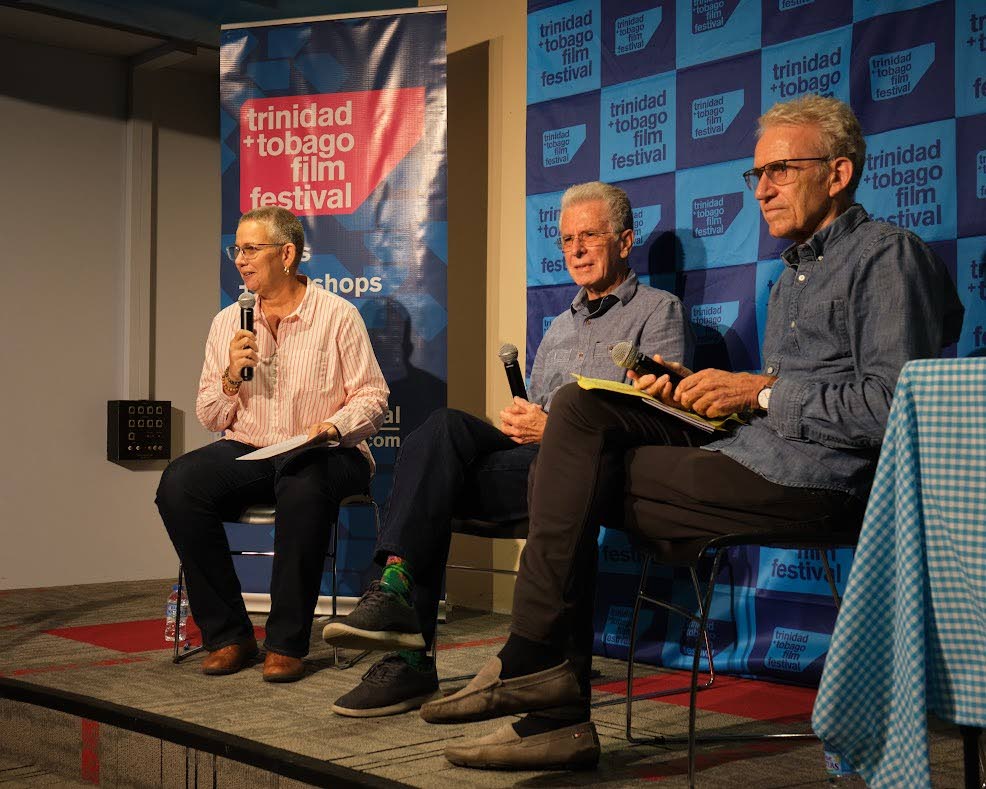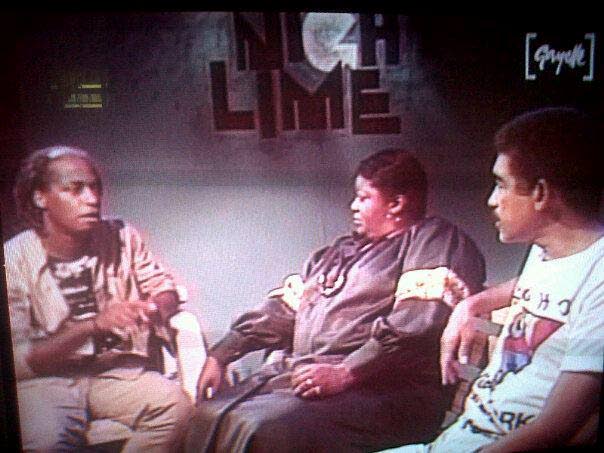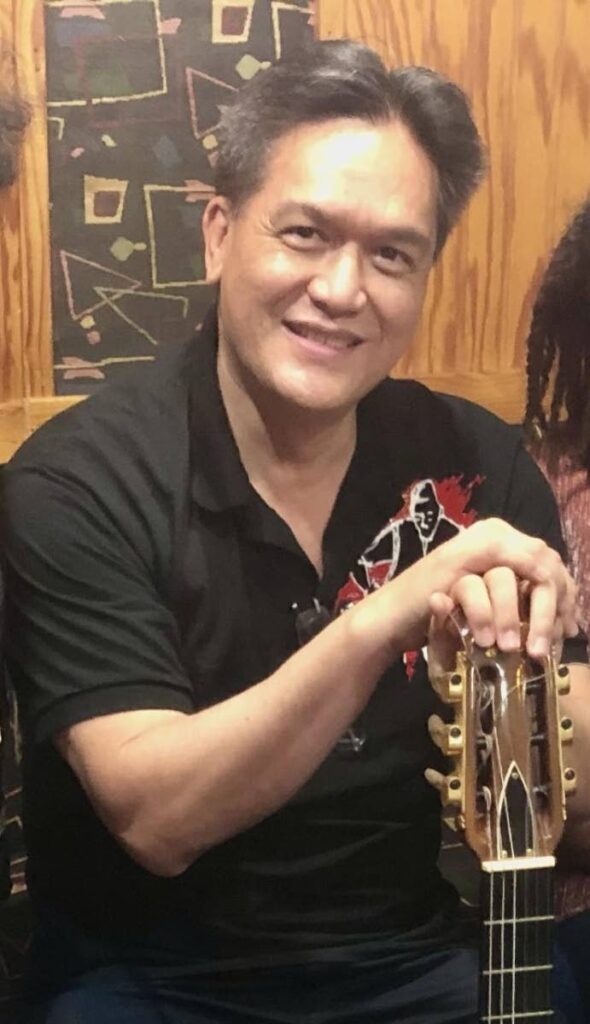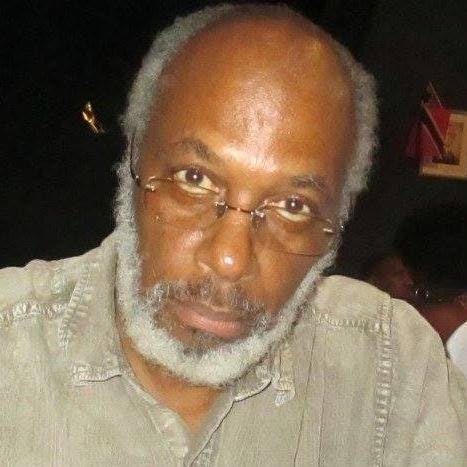Trinidad and Tobago Film festival celebrates Banyan's legacy

BRUCE Paddington and Christopher Laird, both filmmakers and co-owners of Banyan Ltd, are nearing the sale of its video archives – in good time, too.
Their legacies and that of Banyan were celebrated for three days at Nalis in Port of Spain as part of the Trinidad and Tobago Film Festival (TTFF) weeklong series of events, during which some of Banyan's exclusive and most important works were screened, including Ras Shorty I, a medium-length film directed by Laird, which saw the Gayelle team spend a day with the late soca artiste and his family in Piparo, where they lived.
On Monday, the final day of Banyan Retrospective, audiences saw a full-length, made-for-TV movie directed by Derek Walcott, exploring the impact of oil discoveries on the east coast of Trinidad on village life.
The retrospective was hosted with support from the National Gas Company of TT (NGC), and on the opening night NGC's president Mark Loquan announced the company's intention to buy the vast collection that Laird had long been trying to sell to the right bidder.
NGC, Loquan said, is invested in immortalising this country's culture and heritage, which Banyan did wonders to document. He suggested the NGC’s acquisition means greater public access.
A night later, Paddington – the founder of TTFF – together with Laird, sat down for a panel discussion, when they gave insight into the company's humble beginnings and what motivated the team.
The question, Laird said, always was, "What made Caribbean television different to Hollywood?"
"That's, I think, something that motivated us throughout all our careers...A Caribbean puritan civilisation television aesthetic? What is that?"

A puritan aesthetic, they explained, consists exclusively of Caribbean themes and actors.
Banyan, then a workshop, was established in the mid-70s, with Paddington as the sole owner, before Laird joined him a few months later.
Banyan Ltd was founded in 1981, with Laird, Paddington and playwright Tony Hall
as its shareholders.
Race relations and cultural imperialism are sensitive topics they tackled head-on, from the early days.
"Our programmes reflected our view of these things," Paddington added.
"The Dish Ran Away with the Spoon is obviously a key programme dealing with cultural imperialism and the effects of television in the media."
The programme, directed by Laird, was produced in 1992, centred on the domination of Caribbean television by foreign programmes, particularly from the US. It was aired in 120 countries.
"We dealt a lot with race relations in the Gayelle series," he said. The series, a magazine programme, was among its most successful, running from 1985-1990, dealing with an array of issues with culture as its central theme.
In 1974, the UN Educational, Scientific and Cultural Organization (UNESCO), Trinidad and Tobago Television (TTT) and UWI organised a workshop, after which
a series of production units was formed around the country. One group first met in the staffroom at Tranquillity Secondary, Port of Spain, where Savi Akal, another member of the workshop, taught.

The group started working on a series of satirical cultural programmes, which would eventually be named Banyan: Art of the Tree, and ran from 1975-1977.
"We were looking for a name for the series we were planning, and (Akal) suggested we call the series Banyan (for) its significance as a place for religious and community meeting."
Many cultures worldwide consider the banyan tree to have either symbolic or literal spiritual significance. It is a fig that develops trunks from prop roots (adventitious roots that support the aerial branches), allowing the tree to spread outwards indefinitely.
"The group named itself Trinidad and Tobago Television (TTT) Workshop – a bit like Sesame Street," he said, owing to its setting and emphasis on diversity.
TTT handled the technical production.
"The first few programmes were (a bit too) conventional," Paddington said. "We had discussions after these skits and people spoke of the significance of what (was) produced. But soon we had more and more people join the group and this larger group wanted to experiment in different types of productions."
He said the experimental formats were referred to as "callaloo," to reflect their variety.
"Soon our actors were getting very popular," he said, one of whom was Maurice Brash, singer, former foreign languages teacher and vice-principal at Fatima College.
Paddington recalled a skit in which Brash played a foreigner attending Trinidad Carnival for the first time, and in one scene, Brash pointed to a bird, saying, "Look at this beautiful eagle!"
It was in fact a corbeau, Paddington said.
"Somehow the way we produced these skits and these pieces, the way we juxtaposed it, we became very popular."
Tony Hall, Sprangalang instrumental
Several, if not many, future local theatre actors, writers and producers used Banyan as a springboard for success.
But Tony
Hall, actor, playwright and director, was always going to be a star. He died aged 71 in April 2020, just months before his brother, Dennis "Sprangalang" Hall, also died at the same age.
"Tony's speciality was popular theatre. He brought that ideology of getting communities engaged in the topics the skits might portray. He was deeply rooted in community work and drama being used to articulate problems and resolve them within the community," Laird said.

"He also (had strong) political ideologies. Both Bruce and I were left-wing, but Tony always kept us on track and would make sure that the work we were doing was having significance and an impact within the community, of ordinary people, the working class, that sort of thing."
Paddington added, "He was like the heir apparent to Derek Walcott in the (Trinidad) Theatre Workshop, but he decided to go into television and work with us, and he'd been involved with us 15, 20 years.
"He is a natural performer, a natural presenter. I mean he remembered (extensive scripts). It's incredible. We praise CNN and all their presenters, but we had someone far better. And we just had to give Tony an idea, or say what's coming next, and he would add to it and do it so effortlessly."
Footage archive
Banyan's archive is extensive, containing thousands of hours of rare and in many cases, videos never seen by the public. Some include complete programmes, while a large portion of the archives are raw, uncut footage of the country's most recognisable cultural and other icons, making for valuable material for film-makers.
Laird has spent years ensuring the thousands of hours of footage would stand the test of time by converting them to digital format and creating several copies each.
So vast was the collection, Laird said they could no longer afford to pay rent for storage, which used controlled conditions for its safe storage.
Laird told Newsday the company's efforts in trying to get other major companies to do something similar to NGC over the last decade have been "dismal."
The original format of most of Banyan's productions is obsolete, but may have nostalgic value to collectors.
"We started off (the skits) with black-and-white, half-inch reel-to-reel videotape, which was the first videotape that consumers had a chance to use," Laird said. "You have to remember that the video cassette that we know wasn't invented until the '70s."
Laird said Banyan has used every format available for video recording.
Some of the archives are kept at the National Archives in Port of Spain.
Where they will be stored, if and when NGC acquires them, is still to be determined.
Laird, however, expressed confidence that NGC was an ideal buyer to keep the culture alive and accessible to future generations.


Comments
"Trinidad and Tobago Film festival celebrates Banyan’s legacy"